How to grow blueberries
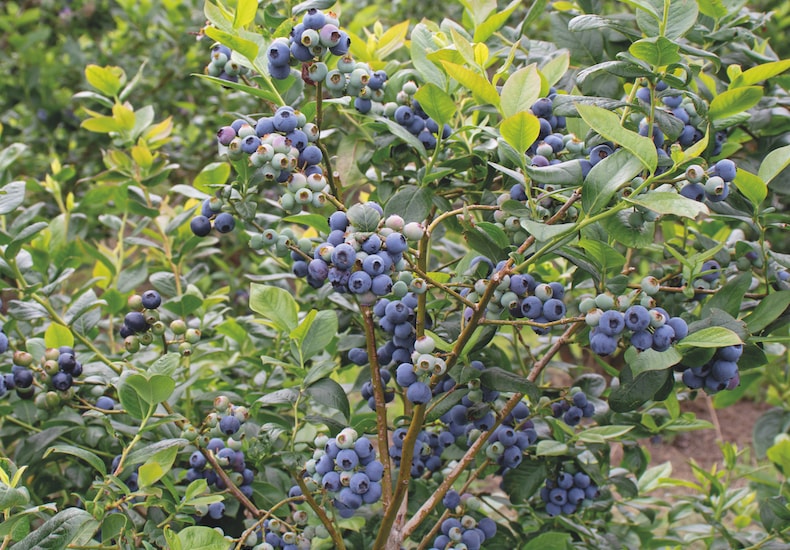
Grow your own blueberries in containers or by planting them in the ground
Image: Blueberry 'Darrow' from Thompson & Morgan
Blueberries are a delicious and nutritious addition to your garden, and growing blueberry bushes is a great way to enjoy fresh, homegrown fruit. These hardy plants can be grown in the ground or in containers, making them a versatile option for gardens of all sizes. Here's a comprehensive guide on how to grow blueberries in the UK, including tips on when and where to plant, as well as how to get a bumper crop.
Browse our full range of blueberry plants for inspiration.
When to plant blueberry bushes
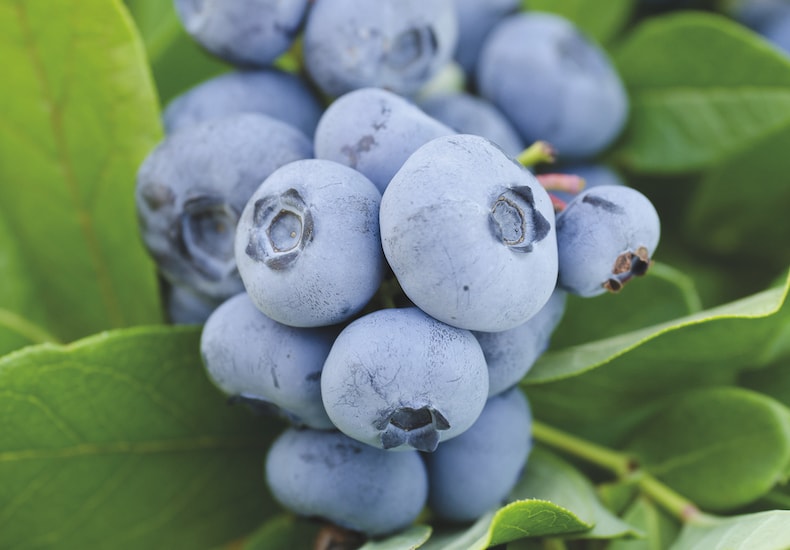
Blueberry 'Chandler' is an attractive shrub that produces lots of juicy berries
Image: Blueberry 'Chandler' from Thompson & Morgan
The best time to plant blueberry bushes in the UK is in the autumn or early spring, when the soil is cool and moist. This allows the roots of the bush to establish themselves before the hot summer months. If you're planting in the autumn, be sure to give the bush enough time to get established before the first frost.
Where to plant blueberry bushes
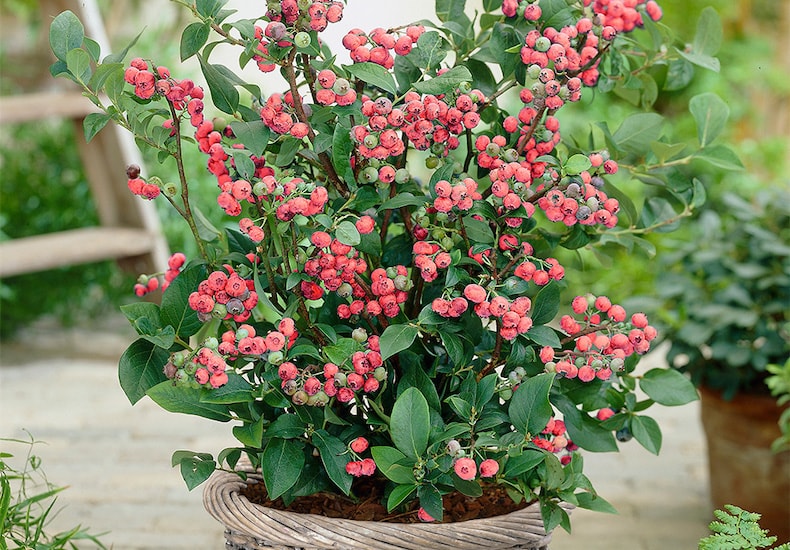
Blueberries like 'Pink Lemonade' make an attractive patio feature
Copyright: Visions BV, Netherlands
Blueberries need a sunny spot that’s protected from strong winds. They prefer acidic soils with a pH between 4.5 and 5.5. If your soil isn’t naturally acidic, you can add sulphur to lower the pH, or plant in a container of ericaceous compost.
It’s also important to make sure your planting site is well-drained and rich in organic matter. Blueberries don’t tolerate soggy soils, and won’t do well in soil that’s compacted or clay-like. Adding compost or well-rotted manure to the soil can help improve its structure and fertility.
How to plant blueberry bushes in the ground
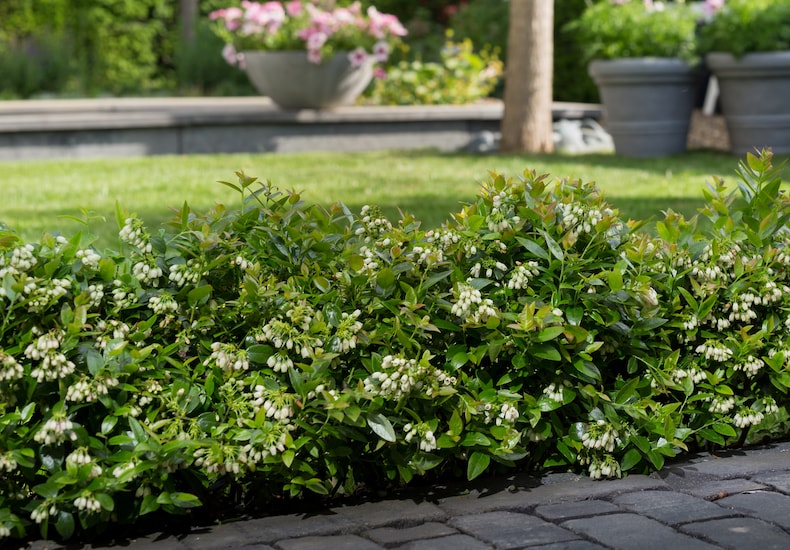
Lowbush blueberry varieties like 'BerryBux' make interesting edible hedges that pollinators love
Image: Blueberry 'BerryBux' from Thompson & Morgan
When planting blueberry bushes in the ground, dig a hole that’s twice as wide and deep as the root ball. Remove the plant from its container and loosen any compacted roots. Place in the hole and backfill, making sure the root ball is level with the surrounding soil. Water your plant in, and then continue to give your blueberries a deep watering once a week to keep the soil moist and prevent the formation of shallow roots. Add a layer of mulch around the base to help retain moisture and suppress weeds.
If you have enough room, it’s always a good idea to plant more than one blueberry to help with pollination. Space them at least one metre apart to allow air and sunlight to penetrate. If you’re growing a compact lowbush variety like blueberry ‘BerryBux’ as an edible hedge, the plants can be positioned slightly closer together.
Blueberries typically begin to bear fruit 3-4 years after planting. By removing all the flowers from your newly planted bush in the first year, you can prevent it from fruiting and divert all its energy to putting on more fruiting wood.
How to plant blueberry bushes in containers
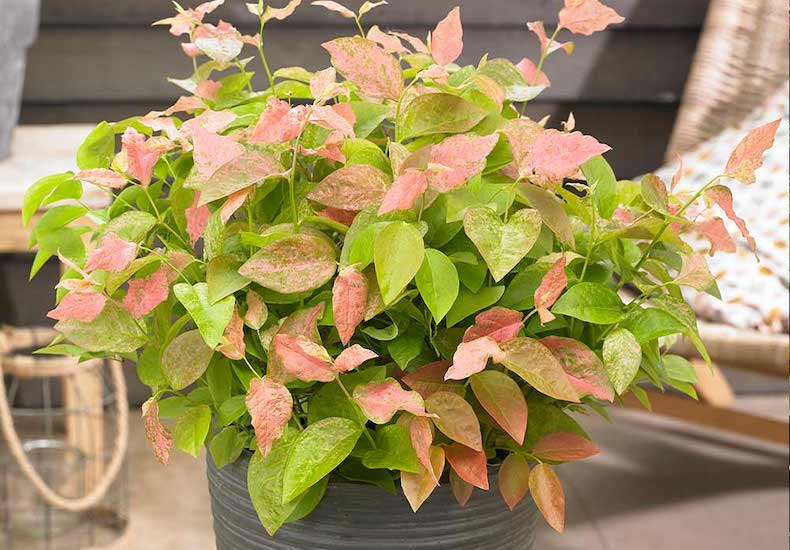
Blueberry 'Flamingo' thrives in containers if your soil isn't acidic enough
Copyright: Visions BV, Netherlands
Blueberry plants can also be grown in containers, making these ornamental edibles a great option for small gardens or patios. Choose a wide container that’s at least 50cm deep, and make sure it has drainage holes.
Fill the container with a mix of ericaceous compost and sharp sand. Plant the bush at the same depth as it was in its previous container, and water well.
How to care for your blueberries
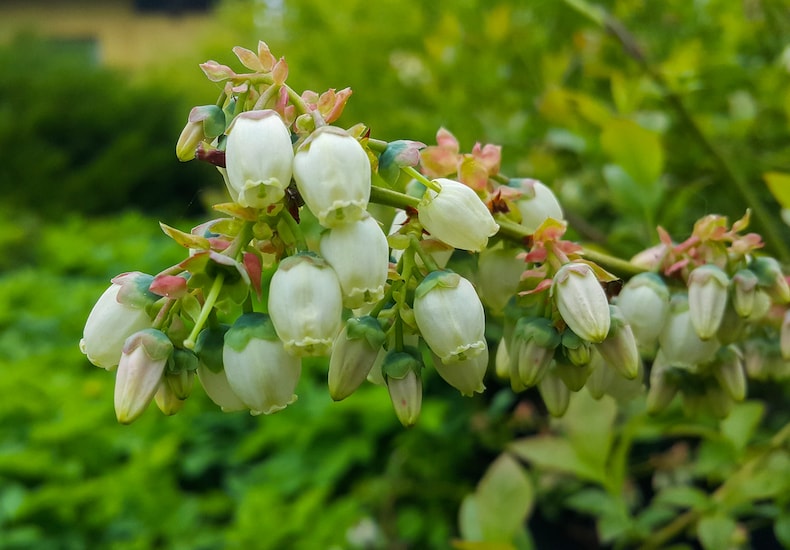
Blueberry bushes look beautiful when smothered in blossom
Image: Blueberry 'Spartan' from Thompson & Morgan
Blueberries require regular watering, especially when they’re flowering and fruiting. Use rain water whenever possible, as tap water can change the pH level of your soil over time. A thick layer of mulch around the base of the bush will help to retain moisture.
From April to September, feed your container-grown plants once a month with a liquid ericaceous fertiliser. For plants growing in the ground, simply apply a high nitrogen feed once a year in February or March. Always follow the instructions on the packet as blueberries don’t like to be overfed.
Pruning is an important part of blueberry care, as it helps to promote healthy growth and a bountiful harvest. The best time to prune is late winter, while the plant is dormant and before new growth begins. Old canes should be removed, and the remaining canes should be thinned to allow for good air circulation. Find more specific advice, along with a helpful video, in our blueberry pruning guide.
Best blueberry varieties to grow

Grow your own blueberries for fresh fruit on tap
Image: Blueberry 'Duke' from Thompson & Morgan
Not sure which varieties to try? Here are some of the most popular blueberries to give you a long season of delicious fruit:
- ‘Earliblue’: Early-season, self-fertile variety with large, light blue, sweetly-flavoured berries
- ‘Duke’: An early to mid-season variety with firm, medium-sized, light blue berries
- ‘Bluecrop’: This excellent mid-season variety produces high yields of flavoursome fruit in August
- ‘Pink Lemonade’: This mid to late-season variety produces deep pink berries with a delicious, sweet flavour
We hope this has given you all the advice you need to successfully grow blueberries in your garden, courtyard or even on a sunny balcony. But don't stop there. Visit our comprehensive hub page for more info and expert advice on growing blueberries.
Sign Up For Exclusive Special Offers




© 2025 Thompson & Morgan. All rights reserved. A division of Branded Garden Products Limited.
Sign up for exclusive offers!



